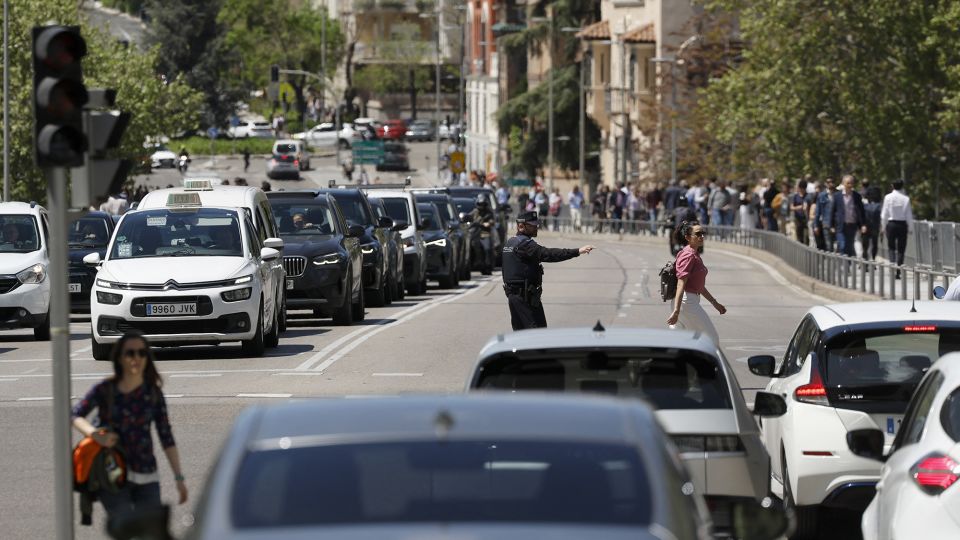image:gettyimage
Timeline of Events
The outage began around 12:30 PM local time, resulting in the abrupt loss of 10 gigawatts from Spain’s electrical grid. This sudden drop led to widespread disruptions:Latest news & breaking headlinesPressNewsAgency+1Latest news & breaking headlines+1
- Transportation: High-speed and commuter trains were halted; metro services in Madrid and Barcelona partially shut down.Latest news & breaking headlines
- Air Travel: Over 500 flights were delayed or canceled across major airports.Latest news & breaking headlines
- Communication: Mobile networks and internet services were disrupted, affecting both personal and emergency communications.
- Healthcare: Hospitals operated on backup generators to maintain critical services.The Financial Express
- Public Services: ATMs and electronic payment systems failed, leading to increased demand for cash.The Guardian+4AP News+4Financial Times+4
Emergency Response
In response to the crisis, Spain deployed 30,000 police officers to assist with traffic control and public safety. Emergency protocols at nuclear plants were activated and later deactivated once stability was ensured. Temporary shelters were established in train stations and sports centers to accommodate stranded travelers.Latest news & breaking headlinesAP News
Investigating the Cause
Initial Theories
Portugal’s grid operator, REN, initially attributed the blackout to a rare atmospheric phenomenon, citing “anomalous oscillations” in high-voltage lines due to extreme temperature variations. However, Spain’s meteorological agency, Aemet, later dismissed this explanation, stating that no unusual weather patterns were detected during the time of the outage. The Guardian+4The Financial Express+4PressNewsAgency+4The Guardian
Grid Instability and Renewable Energy
Experts suggest that the blackout may have resulted from grid instability exacerbated by Spain’s high reliance on renewable energy sources, which now account for 56% of its electricity generation. The lack of matching storage and grid capabilities can make the system more susceptible to disruptions. Reccessary+1Financial Times+1Financial Times
Restoration Efforts
Power Restoration
By early April 29, over 99% of Spain’s electricity demand had been met, and all 89 substations in Portugal resumed operations. The process involved a complex “black start,” where smaller backup generators sequentially restarted larger power units before reconnecting them to the transmission network. Latest news & breaking headlines+2AP News+2The Guardian+2Reccessary
Ongoing Challenges
Despite the restoration of power, transportation systems remained affected. Train services and airline schedules continued to experience delays and cancellations. Emergency workers rescued approximately 35,000 stranded passengers. Latest news & breaking headlinesAP News
Economic and Social Impact
Financial Losses
The blackout has led to estimated losses of up to €1.3 billion for Spain’s self-employed workers, particularly in the hospitality and retail sectors. The Guardian
Public Response
The sudden loss of power caused panic and confusion among residents. People were stranded in elevators and public transportation systems. The failure of electronic payment systems led to long lines at ATMs and increased demand for cash. PressNewsAgencyPressNewsAgency
Future Considerations
Infrastructure Resilience
The incident underscores the need for improved infrastructure resilience, especially as countries increase their reliance on renewable energy sources. Investments in energy storage and grid modernization are essential to prevent similar occurrences in the future.
International Cooperation
Given the interconnected nature of European power grids, international cooperation is vital. Spain, Portugal, and France have previously conducted joint simulations to prepare for such events. Continued collaboration can enhance response strategies and grid stability across the region.RedeiaThe Financial Express
Conclusion
The massive power outage that struck Spain and Portugal in April 2025 highlights the vulnerabilities in modern power grids, especially amid the transition to renewable energy. While power has been largely restored, the event serves as a wake-up call for the need to bolster infrastructure, enhance emergency preparedness, and foster international cooperation to ensure energy security in the future.The Financial Express+2Reccessary+2Latest news & breaking headlines+2
